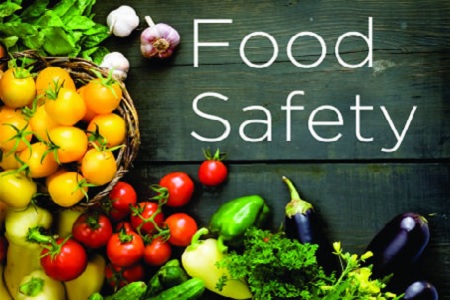Society past president, Duncan Allison, on track with his latest review of agriculture here and all over!
Food Safety
A recent Deloitte survey found that the concept of food safety has expanded to include the need for more transparency from food producers and retailers about their food supply in addition to an assurance of it being toxin-free and pathogen-free. “Companies should broaden their definition of safety to manage and satisfy an expanded set of consumer expectations,” researchers concluded. While manufacturers do have responsibility for clear labelling, 42% of shoppers in 2014 rely on retailers to play a greater role for food safety up from 25% in 2009. The report found that “51 percent want “clear and accurate labeling; 47 percent want clear information on ingredients and sourcing; 42 percent want fewer overall ingredients, no “artificial” ingredients and less processing; and 41 percent want to know the nutritional content of foods. Researchers found that consumers’ traditional short-term food safety concerns about germs, aka pathogens, are now augmented with consideration for long-term health and wellness benefits, such as whether a food is free of carcinogens.” USDA is also promoting their Food Safety and Inspection Service instituted 7 years ago and has instituted significant updates to the country’s food safety system leading to a 12% drop in food-borne illness associated with meat, poultry and processed egg products from 2019 to 2015. Major changes included labeling mechanically tenderized meat, targeting commonly purchased items such as chicken parts versus the whole chicken, modernizing poultry food safety inspections to prevent Salmonella and Campylobacter contamination and holding meat and poultry until microbial and chemical tests have been completed. Food Safety Modernization Act. “About 48 million people (1 in 6 Americans) get sick, 128,000 are hospitalized, and 3,000 die each year from food-borne diseases, according to recent data from the Centers for Disease Control and Prevention. This is a significant public health burden that is largely preventable.”
USDA
It is hoped that the most sweeping food legislation for over 70 years will improve these figures significantly by incorporating a wide range of best practices by paying particular attention to prevention. Greenpeace gets criticized by 110 Nobel laureates for their “rigidly inflexible opposition to all genetically modified foods, a stance that has no basis in science and that threatens to block technology that has great technology for good.” They point out in the letter that science has shown that GM foods are just as safe and healthy as any other foods and that Golden Rice has the potential to relieve a great deal of suffering. Anti-GMO activists are relying on the argument that natural is always better and that GMOs have been developed by the big agricultural corporations to sell more herbicides and pesticide. Both arguments are readily dismissed. The National Academy of Sciences concluded earlier this year that “It is the product, not the process that should be regulated.” Steven Salzburg, Forbes 7/04/2016
The contradictions of science
FAO claimed that meat production is responsible for 18% of the world’s greenhouse gas. Yet EPA’s 2014 report indicated that in terms of total greenhouse gas production agriculture represented only a total of 9%. While enteric fermentation was second only to natural gas systems in terms of CH₄, it still represented 22.5% of total CH₄, although the total had only increased 0.1% since 1990. A more recent report by Mitloehner found livestock responsible for only 4.2% of all U.S. GHG emissions. Those anxious to demonize our livestock industry continue to use the much higher numbers for GHG emissions from livestock and they are being successful.
Research by the U.S. Farmers and Ranchers Alliance
found that the “Sustainability of U.S. farming and ranching” is an issue for 83% of Americans. They also found that 26% said that sustainably is the most important thought or consideration in food purchase decisions. All branches of our livestock industry have the critical task of changing perceptions.
Investment in ag tech
The agriculture market represents 10% of the global GDP ($7.8 trillion) but agricultural technical investments only accounted for <3.5% of the total of $128 billion invested in venture backed companies in 2015. Ag tech investment represents less than 0.5% of the entire Ag market. It is believed there is huge scope for further expansion in light of the growing demand for food and the convergence of technologies that are paving the way for new and more efficient operations. Genetics and biofuels were the major benefactors of earlier funding but today there are a wide range of technologies which have huge promise for the future such as the use of irrigation and water, drones and robotics, bioenergy, decision support technology, biomaterials and biochemical, sustainable protein among others. As in several other fields, really significant advances are likely to come from the confluence of technologies. Advances in productivity and sustainability are certainly going to be needed if we are going to provide affordable and nutritional food across all continents.
DAA 7/27/2016

